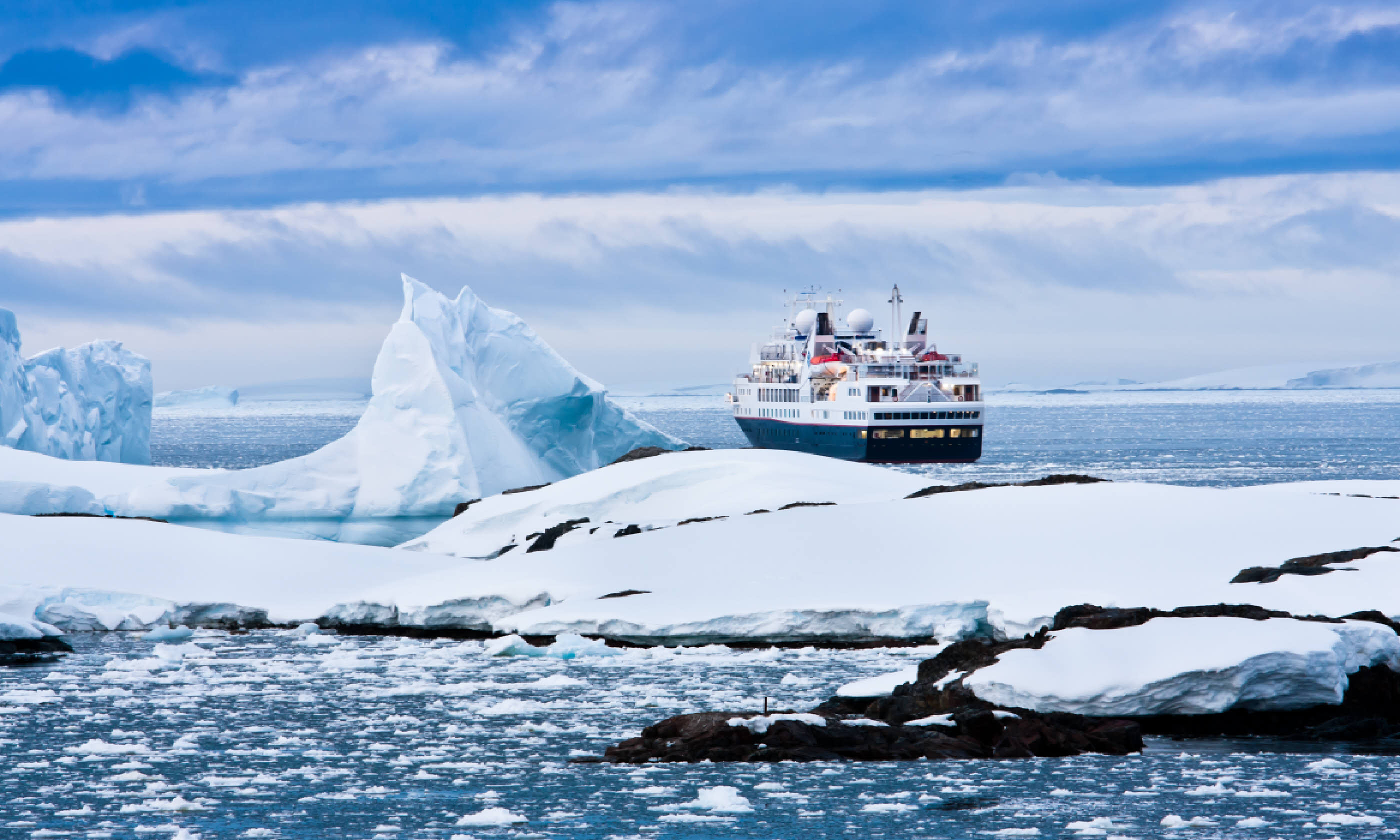
An adventure cruise to Antarctica
100 years after Shackleton set off on his ill-fated mission to cross Antarctica, we follow in his footsteps – through iceberg-littered seas, over treacherous landscapes, and alongside some of the world's hardiest wildlife
The guttural growl of a fur seal hung in the air for a good few seconds, echoing off the sides of the sea cliffs before being stolen by a gust of wind. It was like the call of a dinosaur, the cry of a CGI-ed movie monster or the throaty roar of a lion. Nearby, seal pups scattered, an albatross took flight and we, in our small inflatable Zodiac, were struck silent.
But one creature didn’t react. A single macaroni penguin, its yellow hair-like plumes whipping around its face in the wind, was far too busy attempting to scale a near-vertical rock wall to reach the safety of the other nesting birds above.
At first his task appeared fruitless. He’d take a few steps, then slip down onto his white belly and skid back into the water with a splash. But each time he would get back up again, determined to achieve his goal no matter how long it took. We watched for about 15 minutes while the choppy waves lapped the side of our vessel; eventually – after more than 20 attempts – the penguin’s little padded feet found purchase and he scampered triumphantly up the wet rock.
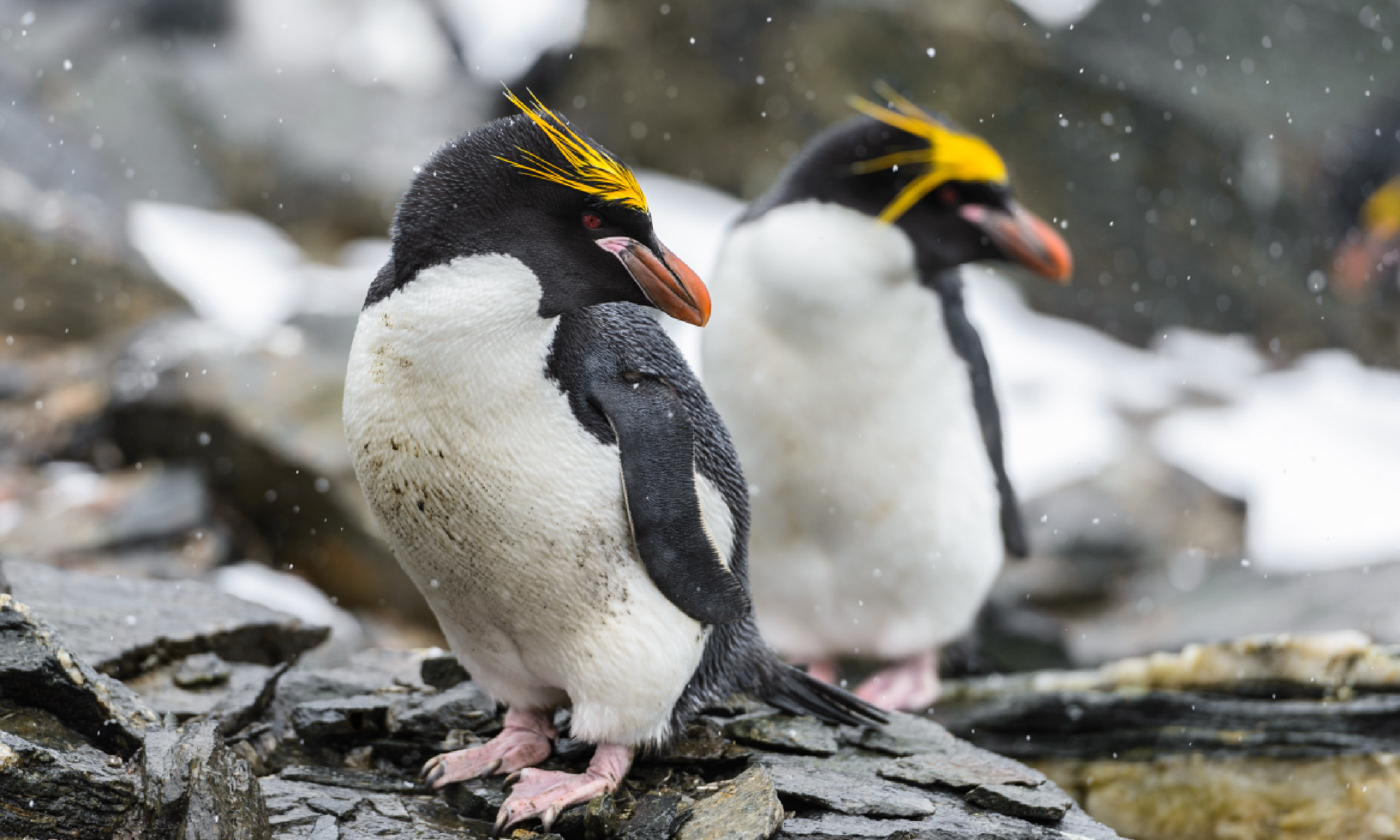 Macaroni penguins (Shutterstock)
Macaroni penguins (Shutterstock)
It was an impressive show of determination in the face of adversity, which was quite apt given our location. This was Elephant Island, a spine of rocky land that sits in the Southern Ocean at the north-eastern end of the South Shetland Islands, and once home – for four and a half months – to the shipwrecked crew of the Endurance, lead by Ernest Shackleton. It was his footsteps that I was following in now, as part of my own mission to explore the White Continent and, hopefully, cross the Antarctic Circle – a feat that few visitors achieve.
Shackleton’s men had set sail 100 years ago – almost to the day of my visit – bound for Antarctica to undertake the first ever sea-to-sea land crossing of the continent. However, disaster struck. The ship became wedged in thick sea ice and eventually sank, leaving the crew adrift on unstable frozen waves. When the ice started to break up they had no choice but to man the lifeboats and make a bid for land. After five days at sea they reached this uninhabited island.
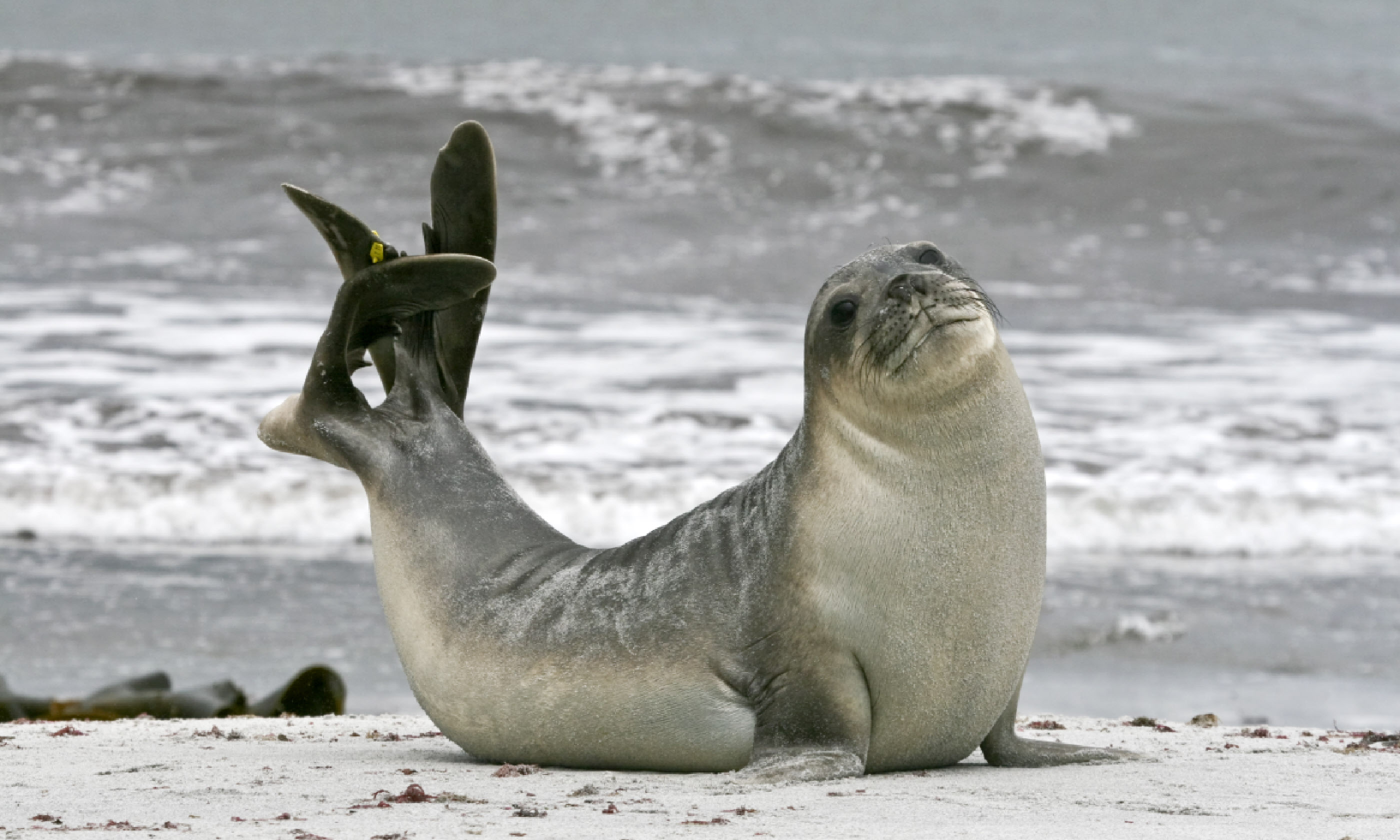 Young southern elephant seal bull
Young southern elephant seal bull
The weather here can be particularly punishing. It had taken us, even in our modern-day reinforced expedition ship, the Sea Adventurer, three and a half days to reach Elephant Island (we were scheduled to take just two); after the long journey I was eager – just as Shackleton’s men must have been – to feel solid ground beneath my feet. But it was not to be. I looked around at the mountain-like shards of splintered rock that rose from the water like towers. Each was edged by tiny pebbled beaches – no wider than a kayak – and covered with clusters of fur seals and chinstrap and macaroni penguins, all fighting for space. It’s a wonder that when Shackleton and his men arrived they were able to find a place to land at all – we certainly couldn’t.
I closed my eyes. I could hear the squeaky wobble of a penguin call and began to detect the not wholly unpleasant ammonia-tinged smell of penguin poo on the breeze. As I tried to imagine the elation the Endurance crew would have experienced on finding land, the pin pricks of a rain shower begin to spray my forehead. I couldn’t help but shiver.
Wilder west
My own journey had begun more than a week earlier. Setting sail from Ushuaia, Argentina’s last outpost, I’d been at sea for two whole days before I stepped foot on West Point Island, in the Falklands. Heading to Antarctica this way makes the whole experience feel like a slow shedding of civilisation, building up to the wild that awaits further south. First the houses thin out, then disappear; then the large seabirds begin to arrive, southern giant petrels and sooty shearwaters swooping around the boat and dipping their wing tips into the water; then hourglass dolphins and pilot whales pop up, breaching as the sun sets. It’s truly magical.
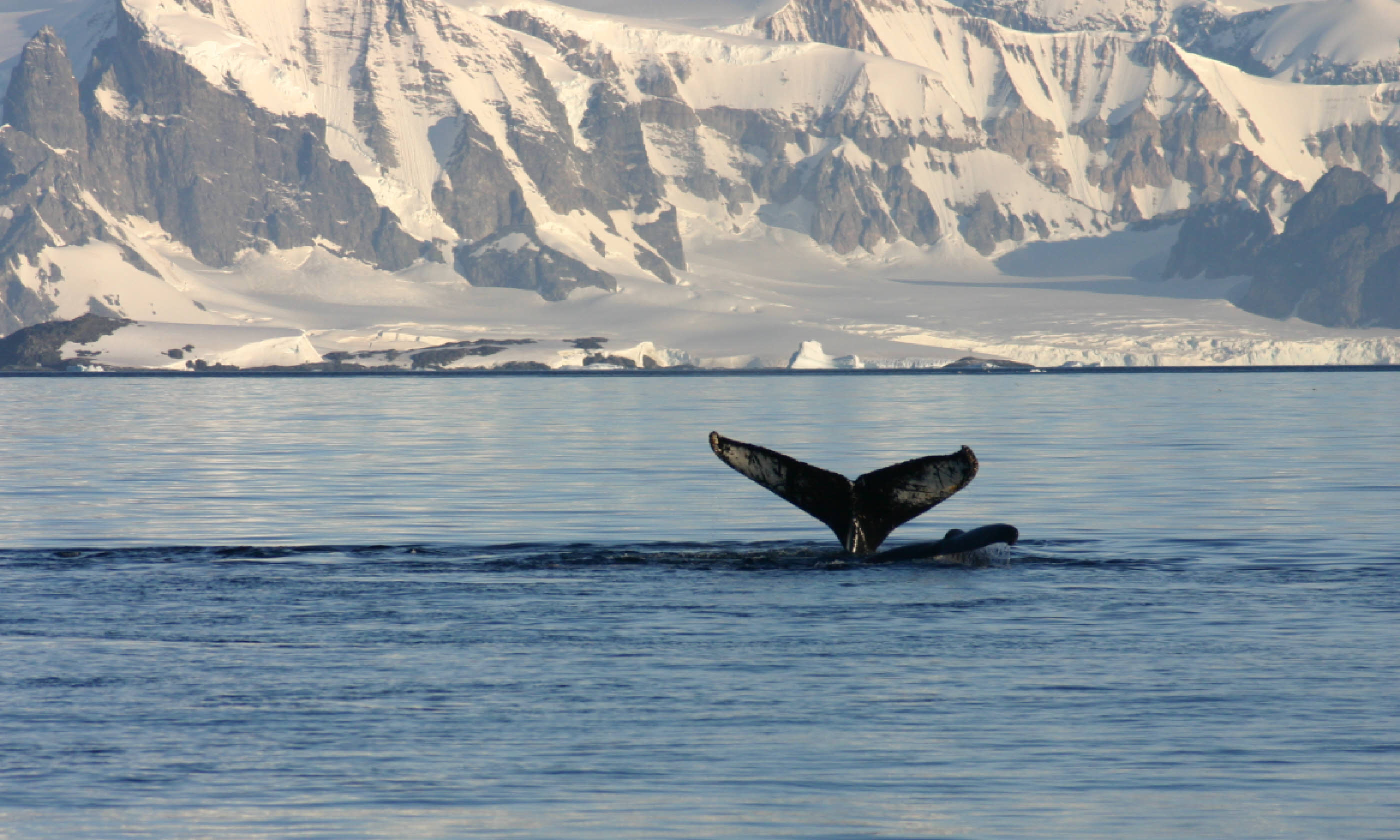 Whale fin and snowcapped landscape in Antarctica (Shutterstock)
Whale fin and snowcapped landscape in Antarctica (Shutterstock)
At West Point I came face to face with my first penguin colony: hundreds of mohawk-sporting rockhoppers, pecking at my boots as they gazed with their curious red eyes. Among them were black-browed albatross nesting on the tussock grass. The wind was so strong that if they wanted to fly, these giant birds would simply open their wings and be instantly lifted into the air. “I could watch them all day,” said Thies Matzen who, along with his wife Kicki Ericson, was caretaker of the island.
“Sometimes we have a couple of ships come in over the course of a day, then we can go without seeing anyone for weeks. There’s always plenty to do here though,” Thies explained as he took me into his house – the only homestead on the island – where Kicki had laid on a spread of homemade cakes and biscuits, served with hot tea. “But I do envy where you are headed next,” Thies confessed as he took out a book that the couple had compiled after spending 26 months living around South Georgia on their tiny 30ft sailboat. “I loved the rugged landscapes, the wildlife, the feeling of being away from everything.” I couldn’t wait.
More magical moments followed in the days that it took us to reach South Georgia – from being surrounded by a pod of over 40 playful black and white Commerson’s dolphins as we raced to Saunders Island in the Zodiacs, to sitting in a very British pub in the Falklands’ capital, Stanley, chatting to locals while surrounded by union jack flags and eating fish and chips.
The days at sea passed in a series of lectures from our onboard geologists, marine biologists and historians, interspersed with hearty meals, whale sightings and excited conversation. By the time we reached Shag Rocks – a cluster of six guano-covered atolls that mark the tip of South Georgia – anticipation had reached fever pitch.
Endurance isle
South Georgia was dismissed as ‘savage and horrible’ by Captain Cook in 1775, when he claimed it for the British crown. Cook also made some throwaway remarks about the abundance of seals, which quickly transformed this wild landscape into a network of sealing stations (hunted for their fur and oil), and later a hub for the whaling industry, which thrived here right up until 1966.
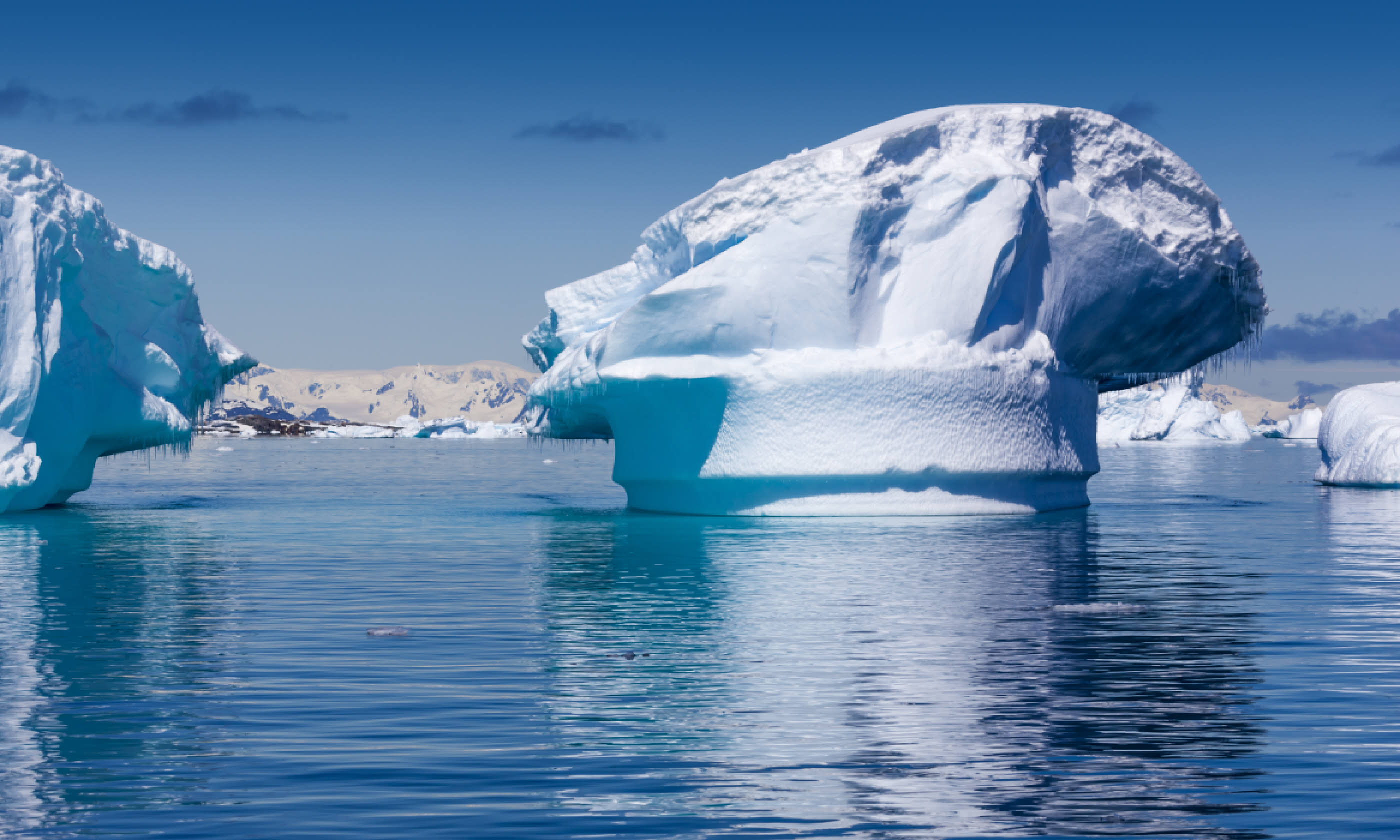 Antarctica icebergs
Antarctica icebergs
Shackleton stopped here before setting sail for Antarctica on the Endurance. Like us he arrived in December, summer in the southern hemisphere, when the sun looms in the sky for over 17 hours a day. He would have been met with waters full of whaling ships, the endless roar of machinery from the beach factories and the foul stench of rotting whale flesh. Today, permits keep ship traffic to a minimum while the old factories have been removed or left to disintegrate; those that remain have, ironically, been commandeered by elephant and fur seals, which have moved in to have their pups – their populations, once nearly depleted, are now booming.
We arrived early morning to visit Fortuna Bay. After the Endurance sank, once Shackleton had seen his crew safely onto Elephant Island, further south, he assembled five of his strongest men and set sail for South Georgia to get help, aboard the lifeboat James Caird. They spent 16 perilous days battling storms and navigating with only a sextant; they finally arrived on 9 May 1916, on the unpopulated south side of the island. From here, Shackleton and two others set off to walk the final 51km over the mountain chain that runs down the centre of the island – which had never been crossed before – bound for the whaling station at Stromness. When they eventually reached the north side, they had to make their way along Fortuna Bay – where I was heading now.
As the Zodiac approached, the sand appeared to be strewn with boulders. But as we got closer I realised that those ‘stones’ were actually moving. Fur seals, everywhere. They ran and roared at us in bluff charges, teeth bared, eyes alive with adrenaline – I wondered if Shackleton had received such a greeting.
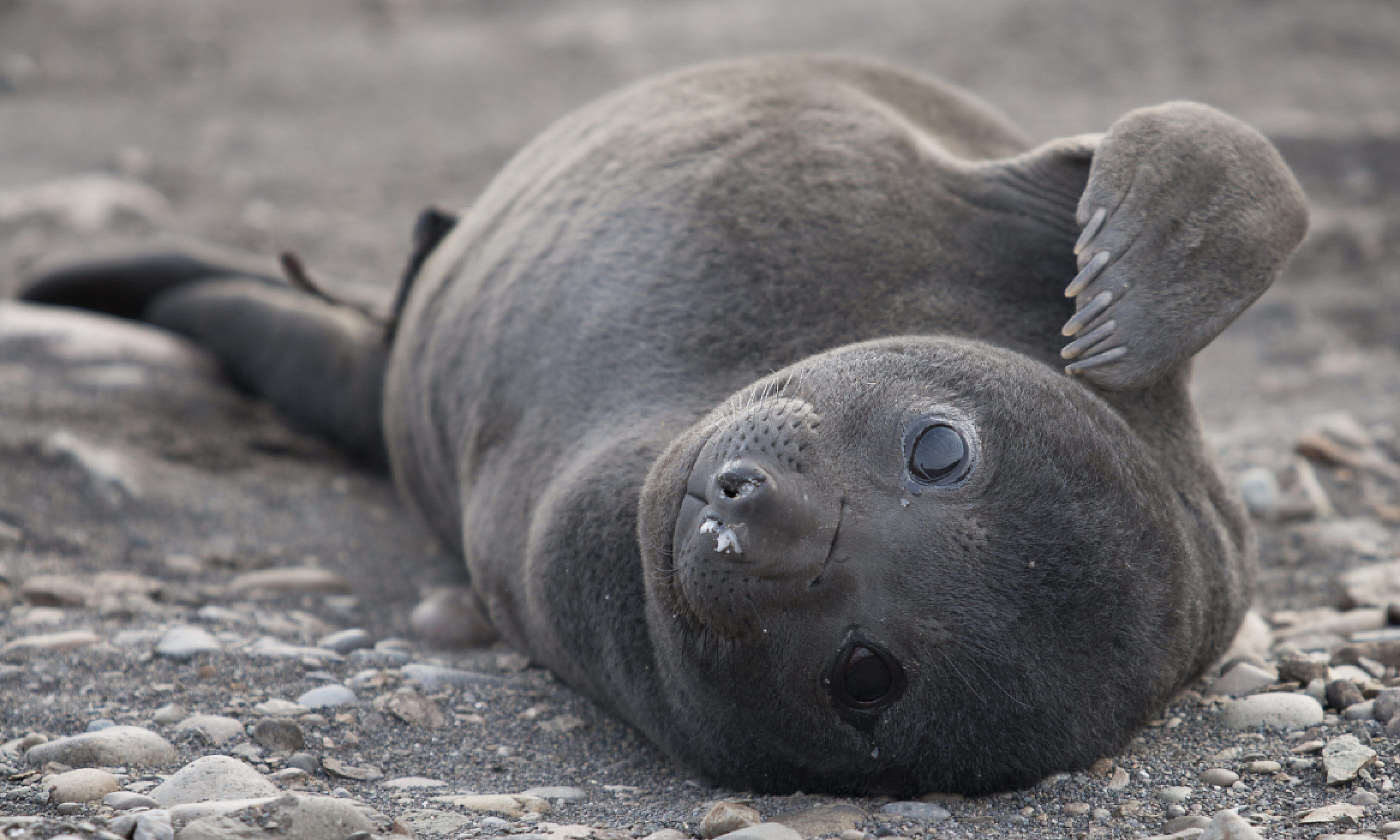 Young southern elephant seal (Shutterstock)
Young southern elephant seal (Shutterstock)
As I passed a cluster of tiny pups, a new sound began to emerge from the long grass ahead – a strange higher-pitched wailing, as though the wind was tearing through a wire fence. Then I saw them. King penguins emerging one by one, their harlequin diamond of orange unmistakable. Mixed in were last year’s chicks in various states of moulting. Some had thick fur coats and walked like huddled old women; others has lost their down in varying degrees –sporting hairy chests, fluffy kilts and what looked like mohawks. All of them squawked in unison.
I walked along the beach, navigating between the wildlife. As it was summer the temperature was mild – around 7°C – but snow was beginning to fall. From here it was just over 5km to Stromness, up and over a col between the mountains. For Shackleton it marked the final section of a trudge that he and his men completed in 36 hours, in winter, with just a short length of rope and a carpenter’s adze. Now, 100 years on, coated in fresh snow and shrouded in thick freezing hill fog, we were lucky that we had an easier option to choose.
We took the boat round to the old whaling station and walked Shackleton’s final 2km, to the waterfall that he’d rappelled down before hiking back into civilisation and salvation on 20 May 1916. I climbed above the cascade from where I could glimpse the rusty remains of Stromness. I couldn’t imagine how Shackleton must have felt knowing they had, against all odds, come out alive.
Every one of the men who set out with Shackleton on the ill-fated Endurance survived; the group on Elephant Island were rescued on 30 August 1916. Shackleton died of a heart attack six years later in Grytviken, South Georgia, on his way back to Antarctica for a final mission. There he was laid to rest at the whaler’s graveyard with his head facing south.
The next day, before continuing my own mission to cross the circle, I made a pilgrimage to his grave to toast him and his crew. After spending time on South Georgia, walking among the mountains and gazing down on mammoth king penguin colonies that numbered 60,000 pairs (plus chicks), making up a huge Where’s Wally-like illustration, I was starting to wonder why Shackleton had been so eager to leave. I was about to find out.
The great white
“Is it a ship?” I asked the captain as a large white object seemed to be heading our way.
“Not a ship,” he replied, and handed me the binoculars. It was an iceberg, a great tabular slab bigger than a five storey block of flats, slowly drifting towards us as we neared the Antarctic Peninsula. Over the past few days we’d left Elephant Island, enjoyed a Zodiac cruise through the narrow channels between Spurt and Trinity islands, cut through rocky caves and sped past calving icebergs as flabby and bemused Weddell seals watched on.
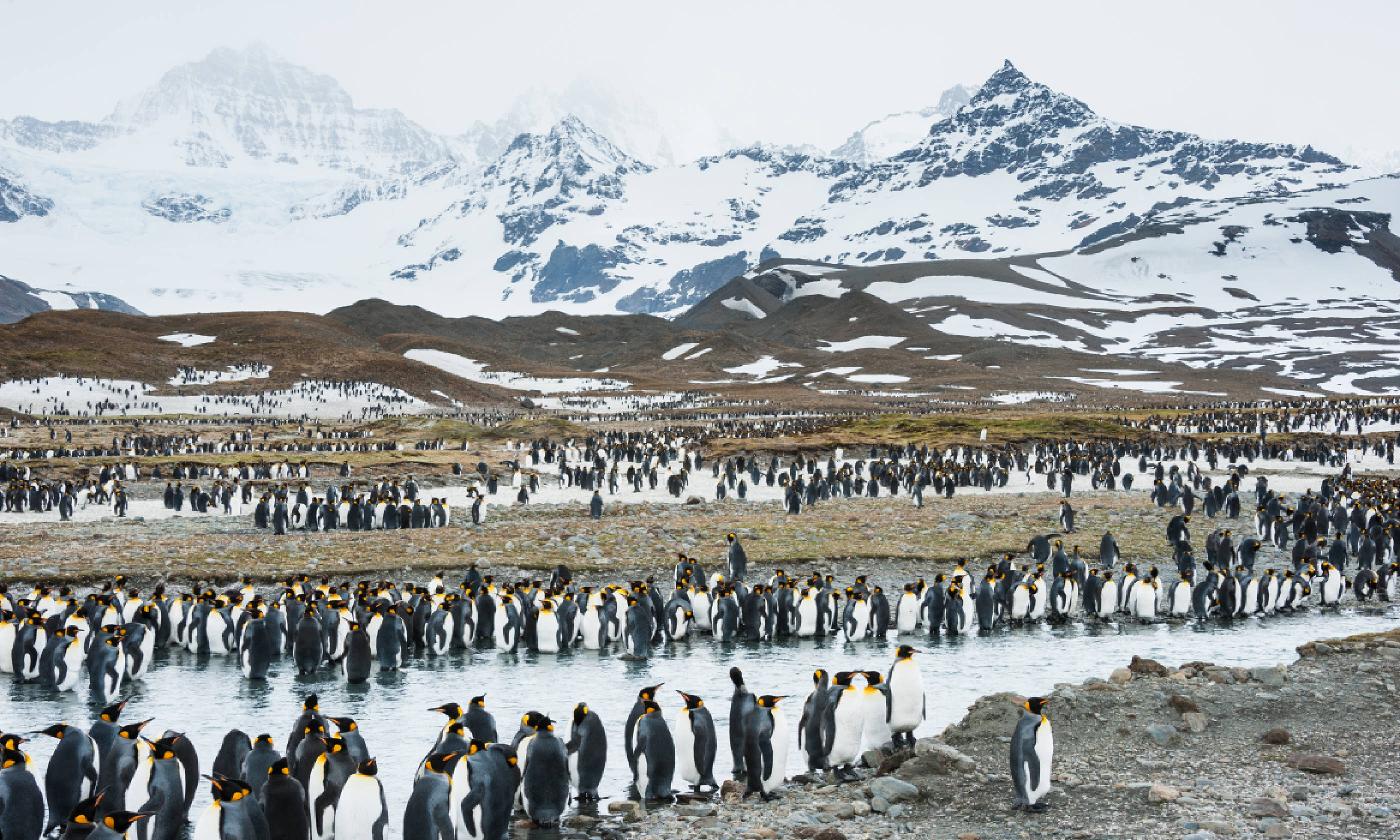 Colony of king penguins in South Georgia, Antarctica
Colony of king penguins in South Georgia, Antarctica
We made our first official stop on the mainland on New Year’s Eve. The pristine snow crunched beneath my boots as I made my way south on the peninsula at Portal Point. The air was cool but the sun warmed my face. Then my guide Will leaned in and whispered: “If you were to keep going straight, for several hundred kilometres, you’d eventually arrive at the South Pole.” A fizz of exhilaration leapt in my stomach.
Back on board we feasted on a polar barbecue of fresh fish, vegetables and champagne on the outer deck as the sun set and orcas breached on the portside. It was the perfect end to 2014.
I woke in 2015 to the sound of cracking outside my window. I looked out to see the calm waters filled with sea ice, which the boat was slicing through as though it was icing sugar. After pulling on my clothes, I headed up to the bridge. All was silent save for the occasional shattering of frozen ocean.
We were nearing our ultimate goal – the Antarctic Circle, 66° 33’ south, a bearing few other ships reach. The further south we went the thicker the ice became. I watched as the captain focused on the maps and computer readouts, and scanned the white-encrusted horizon. He slowed the engine to a crawl. Then, with a smile, he gave a long blast of the horn. We had arrived.
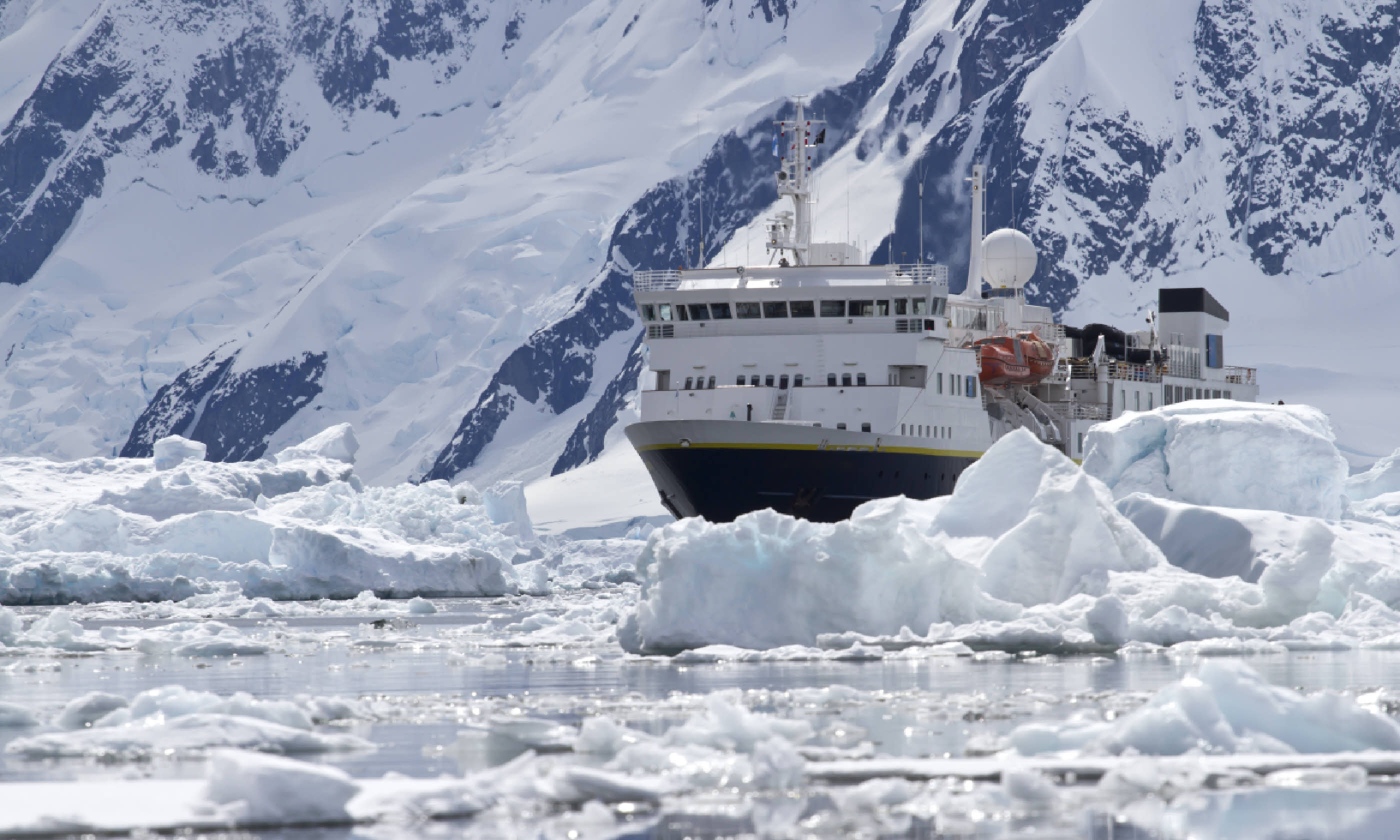 Ship crossing Antarctic Peninsula
Ship crossing Antarctic Peninsula
There is, of course, no manmade sign or physical line to cross; no real reason, some might say, to set the Antarctic Circle as a goal at all. But that’s what’s so great about Antarctica: it’s a place where dreams that others may never really understand can come true.
The crew did have a ritual to mark the occasion, however: a polar plunge, which involves stripping to a swimming costume and jumping off the ship into the icy waters. Minutes later I was standing in my swimsuit, the metal steps stinging the underside of my feet, wondering if I had the nerve to take on this (optional) challenge.
After this there would be more Antarctica experiences of course. We’d come face to face with leopard seals and bespectacled Adélie penguins at the ‘iceberg graveyard’ of Pleneau Bay. We would make a ludicrously sunny passing through ‘Kodak Gap’ (aka the Lemaire Channel), flanked either side by serrated peaks. We would visit Port Lockroy, home of the southernmost post office in the world. We would have a close encounter with the minke whales around Danco Island, watch gentoo penguins steal stones from each other’s nests near Neko Harbour and even dip our feet into the natural hot springs on highly volcanic Deception Island.
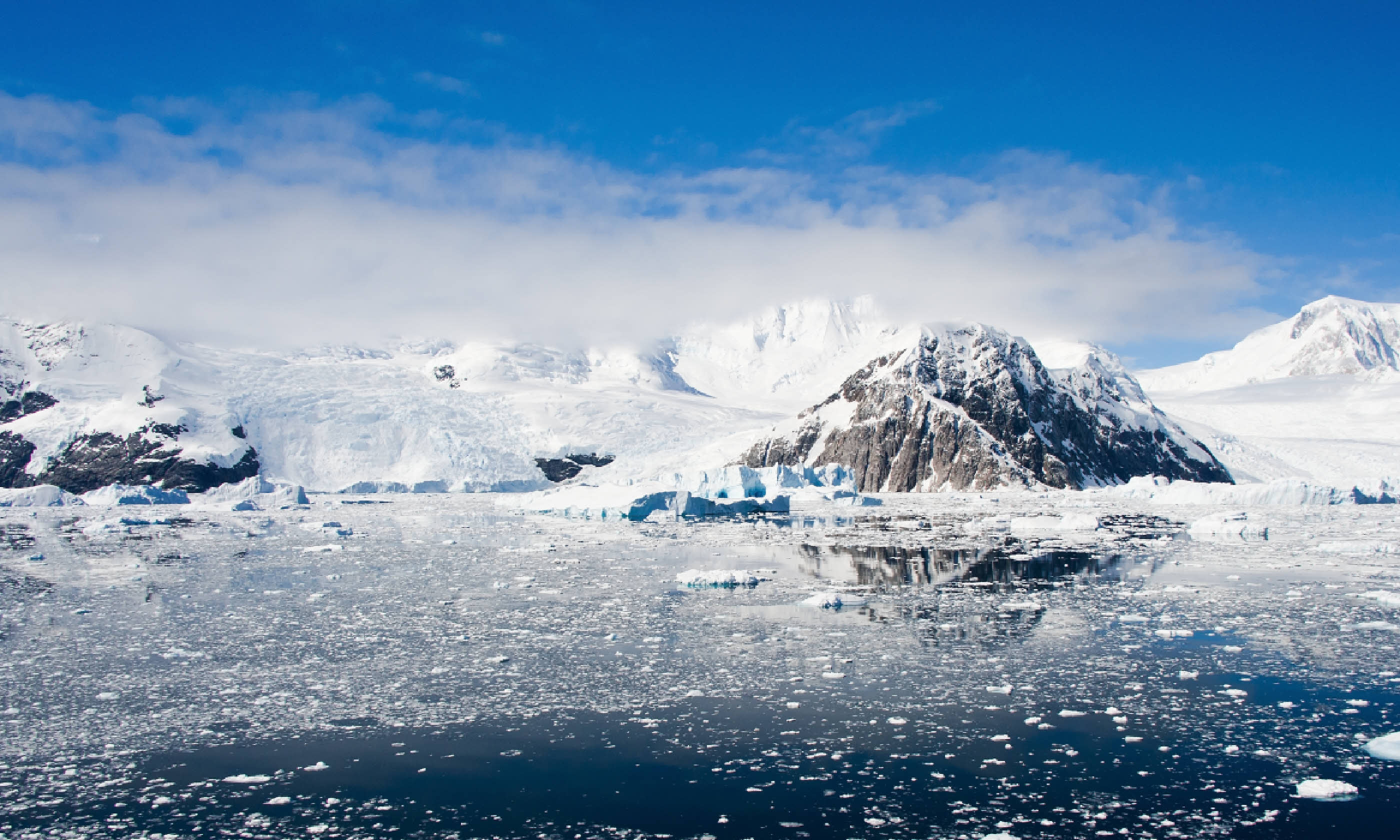 Lemaire Channel in Antarctica (Shutterstock)
Lemaire Channel in Antarctica (Shutterstock)
But before all that, there was one thing I had to do. I looked at the water beneath my feet. According to the thermometer, the temperature was barely 1°C. It was bitterly cold, definitely hazardous, and safe return was potentially in doubt. But if I did do it, if I could pluck up the courage to see this challenge through – like the little macaroni penguin I’d seen back on Elephant Island – then honour surely awaited. And I, like Shackleton, knew that was worth the risk. I closed my eyes and jumped in.
Like this? Don't miss...
5 things I wish I'd known before my Antarctica adventure cruise | Heading south? Read this first!
7 ways to get to Antarctica | Which would you choose?
Wildlife encounters in Antarctica | Our resident wildlife expert shares his tips
Make it happen
The author travelled with
Quark Expeditions aboard the Sea Adventurer on its 23-day Crossing the Circle via the Falklands and South Georgia trip. A 14-day Crossing the Circle cruise (not including Falklands and South Georgia) on the Ocean Diamond, departing 15 Jan 2016 includes all meals on board, one night’s accommodation in Ushuaia, all Zodiac trips, lectures and hiking/snowshoeing excursions. Optional extras include camping and sea-kayaking. Minimum age for passengers is eight. Those aged between 8-16 must meet minimum height/weight requirements; restrictions apply to under 18s.
Choosing the right expedition vessel for you is vital. No more than 100 people are allowed on shore at one time so smaller ships mean everyone goes ashore at once. Larger ships tend to be cheaper and more stable in rough seas but operate a shift system for landings.
See what optional excursions the ship offers – ie: hiking, camping, kayaking, snowshoeing and helicopter rides.
Accommodation
On most Antarctic cruises you pay for the bed rather than the room. You can save money if you are prepared to share a triple cabin and pay a lot more if you want a private room.
How to get there
Cruises to the Falklands, South Georgia and the Antarctic Peninsula usually depart from Ushuaia, southern Argentina. There are no direct flights from the UK to Ushuaia.
TAM flies from Heathrow to Buenos Aires via São Paulo;
LAN flies from Buenos Aires to Ushuaia.
What to pack
A warm jacket is usually provided by your expedition cruise company, as is the use of Muck boots. You will need to take good waterproof trousers. Packing layers is best – go for merino wool tops and long johns (naturally anti-smell) to sit next to your skin, a fleece and insulated jacket for extra cold days. Don’t forget to take several pairs of warm socks, gloves, a hat, sunglasses, suncream, binoculars, a camera, memory cards and – for the Polar Plunge – a swimming costume.
Main image: Cruise ship in Antarctic waters (Shutterstock)








